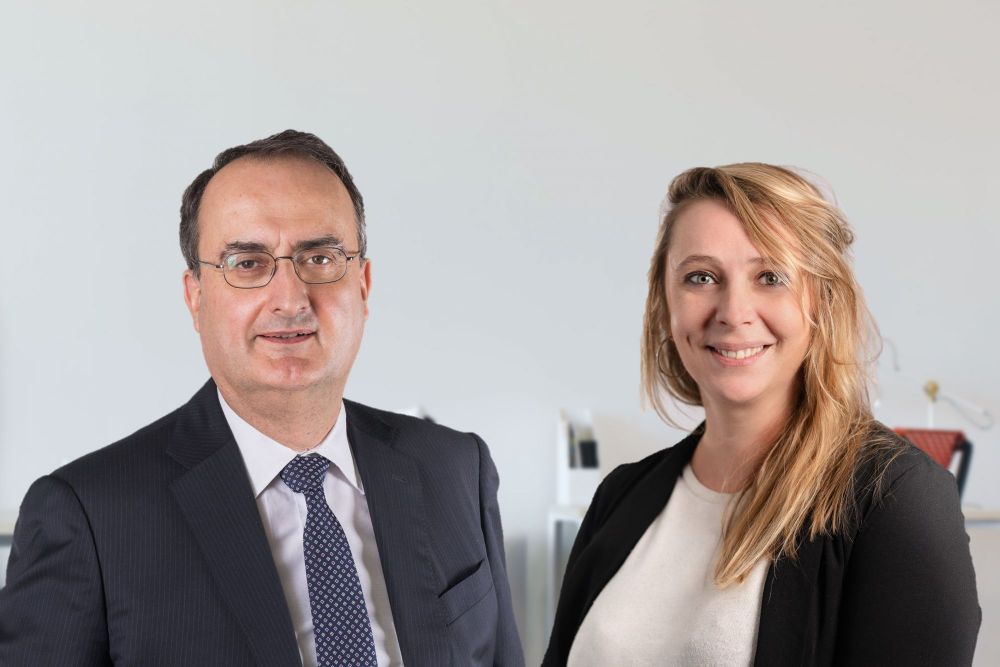- Home
- EN
- Kardham Group
- News
New uses to improve the quality of life in healthcare establishments
February 2022

At a time when the 6th wave of Covid-19 due to the Omicron variant seems to be taking hold in the country, it's a safe bet that the weariness of caregivers vis-à-vis their working conditions will come back to the fore. from the scene: since the start of the health crisis, 97% of professionals have reported an increase in their suffering at work*. A paradox for places whose primary mission is to treat.
Tribune produced by Alliancy, Mag Numérique et Business.
In this quest for a better quality of life at work for health personnel, doctors, nurses but also administrative or technical services, levers could be found if these places were considered to be open to their environment.
Because, like what we have seen in the tertiary or retail sectors, the hospital is also experiencing a cultural revolution. Focus on 3 new uses that are shaking up work environments and that could be a source of inspiration for more efficient and caring healthcare establishments. By Elodie Guet, Design & Build Paris Director of the Kardham Group and Pascal Zératès, Managing Director of Kardham Digital give us their analysis.
Co-construction source of attractiveness
Replacing the consumer-actor at the heart of a now more collaborative economy is one of these uses. Just as brands can call on their communities to launch new products, the hospital of tomorrow would have everything to gain from co-constructing its work environments by relying on its community of employee-ambassadors. By implementing experimental programs where the employee could provide feedback to develop these spaces over time or by dematerializing them and offering a wider range of user services. One could thus envisage a transposition of what is called "activity based working" in office layout, in other words, the possibility for staff to redefine the spaces in which they wish to work according to their own needs and the activities for everyone: common conviviality spaces, quarters for small work groups, established spaces for one-off collaborative projects, alcoves to isolate oneself and work individually or even well-being spaces to rest.
Solutions also exist on the digital side to improve fluidity, efficiency, and therefore quality of life at work: solutions for counting and monitoring the flow of patients and professionals in entrance areas, services, waiting rooms, car parks; solutions for reserving resources and managing the occupation of treatment rooms, consultation rooms and rest rooms; interactive solutions to better orient and record; to better inform in real time also like the alert buttons, to communicate better like the exchange and discussion forums, or even to train better. So many innovations already at work with success in the tertiary sector, sources of saving time and reducing irritants and therefore stress.
Inclusion to create belonging
The emergence of a society that wants to be more inclusive, as we have seen with a reinvention of family codes or a greater attachment to transgenerational interactions, could well also be a source of inspiration. In the planning trades, alongside the organization of work environments following the activity-based working model, we have also seen that the intensification of telework has encouraged the revaluation of workplaces as real living spaces. with a strong challenge: moving from open space to happening space. Spaces that are both more open, larger, inviting greater socialization and allowing moments of sharing. In health facilities, space can also be used as a tool for organizational transformation, as a vector of quality of life at work.
This can involve mobile and digital solutions to modulate and make working methods more flexible and offer, within the common set, a "home for all". An essential lever when we know that one of the major problems of nursing staff is the precarious balance between their professional and personal lives.
This can also go through a greater hybridization of places with, on the digital side, many solutions to include and support staff in a multiple ecosystem: teleconsultation health service platforms, training or personal development webinar platforms , one-click concierge services to lighten daily life, QVT apps, tools to prevent mental workload, etc.
Work, recharge and revitalize!
The new relationship to space and time observed in recent years in our societies is also one of these uses that could be transposed into health. Evidenced by this, in work environments, but not only! the emergence of island universes offering differentiating experiences or the creation of bubbles conducive to disconnection and revitalization. In general, the idea here is to offer the user a better experience throughout his life or work journey, in places that invite him to connect and/or disconnect completely from his environment. immediate. In tertiary real estate, this is materialized by a greater demand for exotic spaces, open to the outside, indoor-outdoor spaces that go so far as to offer a poetic parenthesis with this ever-stronger desire to create moments of privileged sharing, to bring more comfort, more tranquility and more fluidity in a pleasant setting. All of which contributes to greater well-being and therefore better decision-making.
In health establishments, this transposition would make it possible to find a certain serenity in places that would be neither cold, nor neutral, nor sanitized. A call for disconnection to which digital technology can, moreover and paradoxically, also contribute. This is evidenced by the creation of spaces offering sound and visual immersion experiences to promote rest and relaxation. Healthcare personnel need spaces that allow them to disconnect, regain energy, rest and even sleep, many of whom work staggered hours. Places that also allow them to receive courses in managing stress, emotions or physical and mental fatigue. There are multiple technologies and techniques to access these revitalization tools. These spaces, combined with digital programs that are real on-line well-being coaches, promote support that is as close as possible to the physical and mental health needs of health professionals for better prevention of musculoskeletal disorders (MSDs) or risks psychosocial (PSR).
Digitized environments, therefore, which can be offered to patients but also to professionals so that they relearn how to take care of themselves in order to take better care of others. An essential element in the quest for a more flexible, open and peaceful hospital. By keeping, always in the bottom line, two invariables: sobriety and listening to needs.
*Survey conducted online by the Soins aux Professionnels de la Santé (SPS) association among 1,877 caregivers

